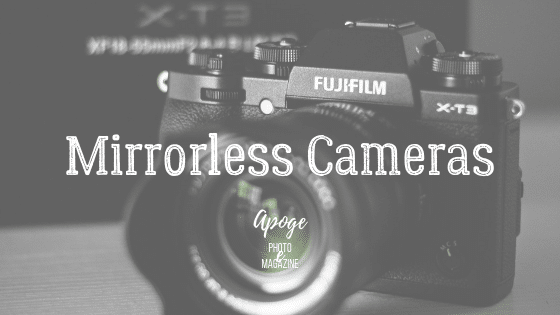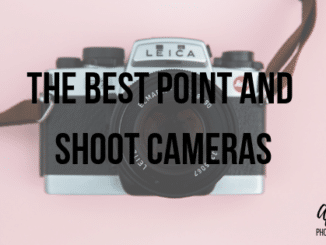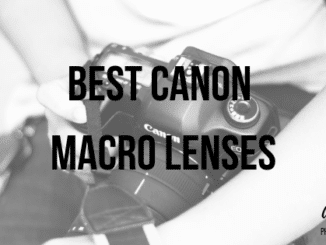
It’s only recently that Mirrorless cameras have come to be taken seriously by the professional and prosumer markets. Previously they were viewed as a kind of halfway stage between an amateur compact camera and a “grown-up” DSLR. Indeed, a certain kind of Mirrorless camera – usually one with manual controls but a fixed lens – is still referred to by many people as a “Bridge” camera; because it bridges the gap between these two main camera types.
But things have changed extremely fast in recent years. Not only is the Mirrorless system no longer considered to be an amateurish interim product for those photographers who are not yet ready for the real thing, but with the introduction of full frame 35mm and even Medium Format Mirrorless cameras, all the signs are that Mirrorless technology is on its way to eclipsing DSLRs in the near future. Not only at consumer levels, but likely even among professional photographers.
But what exactly is a Mirrorless camera? How do they differ from other types of camera? And why have Mirrorless cameras suddenly become so popular? Our guide to Mirrorless cameras explains all.
The Main Characteristics of Mirrorless Cameras
Logically we should start with the most apparent trait of Mirrorless cameras: namely the fact that they don’t have a mirror. As we’ll see shortly, the lack of a mirror is both the main advantage and disadvantage of the Mirrorless system, influencing nearly every major element of the camera’s design.
But let’s step back even further for a moment: Mirrorless cameras are named in this way for a reason. If they don’t have a mirror, then clearly other cameras do. Which cameras use a mirror? And why would a camera even have a mirror in the first place?
The use of a mirror is the defining characteristic of DSLR cameras, a system that relies upon the placement of a mirror between the lens and the shutter/image sensor in order to provide the photographer with a direct, real-time view of a scene – precisely as the camera will capture it.
When not taking a picture, this mirror sits in front of the image sensor at an angle of 45 degrees, reflecting the light entering the lens up into the camera’s viewfinder. This way, the user can see exactly what the sensor will capture once the shutter release button is pressed. This makes it easy to accurately select composition and set focus at the desired point within the frame.
When it’s time to take the photo, the mirror flips up out of the way, the shutter opens, and the image sensor behind it captures light from the lens (or, back in the days of analog photography, on light-sensitive film).
For a more in-depth explanation of the DSLR system, its advantages and disadvantages, and what distinguishes DSLRs from the Mirrorless system, check out our separate guide to DSLR cameras. For now, all you need to know is that DSLRs have mirrors – permitting a direct optical view of the scene through the lens – while Mirrorless cameras do not. As we shall see, this single fact has many secondary consequences for how Mirrorless cameras operate.
Image Sensors and Lenses
By definition, DSLR cameras always permit the use of interchangeable lenses. Although many Mirrorless cameras can also be used with interchangeable lenses, this is not the case with all Mirrorless cameras in the broadest sense of the term. This is because, technically, the label Mirrorless can be applied to a wide range of cameras, encompassing all of the following diverse camera types:
• Compact “point and shoot” models with a fixed lens (either zoom or prime), aimed purely at the casual user.
• Prosumer full frame fixed-lens cameras, such as Sony’s Cyber-shot DSC-RX1.
• A wide variety of 35mm format interchangeable lens cameras, coming with a diverse range of sensor sizes: from full frame down to very small “cropped” sensors.
• Medium Format interchangeable lens cameras intended for professional use.
• Even old analog Leica rangefinder and heavy wooden field cameras could technically be considered as “mirrorless”, for the simple reason that they do not use a mirror.
As will be evident from the above list of camera types, neither a particular kind of lens nor the size of a camera’s image sensor can be considered as defining characteristics of the Mirrorless system – at least in the most general meaning of the term.
Often though, the term Mirrorless camera is used by people in a more specific way, solely to refer to 35mm interchangeable lens cameras (again though, such cameras can come with a variety of different size image sensors). While arguably this usage is not entirely inaccurate (for a start, it would exclude medium format Mirrorless cameras such as the Hasselblad X1D or Fuji’s GFX 50R), it is perhaps the most common way of using the label “Mirrorless” today.
It is also a usage which has certain merits, as it helps to differentiate very basic fully-automatic point-and-shoot cameras from a category of, shall we say, more serious photographic tools which allow full manual control of the exposure settings and the use of interchangeable lenses. Technically neither type of camera uses a mirror. But as there is currently no alternative name for the more advanced models, the term “Mirrorless” is often used specifically to refer to these, in opposition to terms such as “compact” or “point-and-shoot” for the more basic ones.
Image Stabilization
How DSLR and Mirrorless camera manufacturers approach image stabilization tend to differ somewhat. In part, these differences in approach can be attributed to technical matters. To a degree, they are also a result of the historical legacy of earlier photographic technology combined with modern-day business considerations.
Image stabilization was first developed back in the 1980s when digital imaging was still in its infancy, and film cameras were the only realistic consumer-level option. In the simplest of terms, image stabilization works by adding internal parts to the camera which compensate for any accidental vibration caused by the user, strong wind, or other external influences.
Getting a digital sensor to move around to accurately counterbalance camera shake is already quite an achievement in itself. But pulling off something similar with a roll of photographic film sounds like it would have been a real technological challenge. Unsurprisingly then, manufacturers of film cameras concentrated their image stabilization efforts elsewhere, instead developing in-lens motors in order to stabilize the image before it reached the film plane.
Canon and Nikon dominated the analog SLR era. A dominance that they’ve managed to sustain into the digital age, at least as far as DSLRs are concerned. While dedicated Mirrorless camera manufacturers have developed methods of stabilizing the image at the sensor level, Canon and Nikon have largely stuck to their in-lens stabilization systems. In part, this can probably be attributed to habit and the fact that over the years these two companies have heavily invested in the area of lens-stabilization technology. To a certain degree, it’s likely also because these brands get to sell yet more lenses each time that they update the IS technology inside them.
However, beyond the difficulty of stabilizing film, there’s another good technical reason why DSLRs tend not to feature in-camera stabilization. And once again it’s a direct result of the reflex mirror system: if stabilization takes place at the level of the image sensor (or roll of film), the effect of this stabilization will not be visible to the photographer when looking through the viewfinder.
Of course, as Mirrorless cameras provide monitoring of the view through the lens directly from the sensor itself – without bypassing the sensor via a mirror in the way that DSLRs do – this has never been a problem for manufacturers of Mirrorless cameras. Consequently, many Mirrorless cameras come equipped with in-camera stabilization. And in many cases, this stability can be further augmented by a secondary degree of stabilization within the lens too.
However, as pointed out in the introduction to this section, the differences in approach to image stabilization between DSLRs and Mirrorless cameras are only partially technical. And despite the fact that Nikon has also moved into the Mirrorless market, it’s only very recently that the brand has finally given in and added in-camera stabilization to its flagship full-frame Mirrorless camera, the Z7, and its midrange sibling, the Z6. Meanwhile, Canon’s equivalent, the EOS R, still doesn’t offer in-body stabilization at all. There is no obvious technical reason for this.
Autofocus
Autofocus performance is one area in which Mirrorless cameras have traditionally lagged behind DSLRs. While almost all interchangeable-lens Mirrorless cameras will far outdo the autofocus performance of a compact camera, many are still not up to the same levels of speed and accuracy as even some entry-level DSLRs. On the other hand, there is an increasing number of higher-end Mirrorless models that will easily outperform an entry-level DSRL on focus, and some that can even compete with the very top end of professional DSLRs.
To make sense of this, it’s important to understand that the way in which Mirrorless cameras focus is one of the primary features differentiating the system from DSLRs. Once again, this difference stems from the lack of a reflex mirror.
There are currently two main methods of autofocus in use in cameras of all types.
– Phase Detection Autofocus
Employed by all DSLRs. Also used by some Mirrorless cameras.
Phase Detection autofocus systems traditionally require a mirror in order to split the incoming light into two images, which can then be compared to determine correct focus distance – in a manner which is quite similar to old the rangefinder focus technology used in classic Leica cameras. The primary advantage of Phase Detection autofocus is that it provides information regarding the distance of a subject from the camera. So not only does the camera understand whether it needs to shift focus to a position that is further away or nearer, but also by precisely how much.
– Contrast-Based Autofocus
Employed by nearly all Compact cameras, many Mirrorless cameras, and by all DSLRs when used in Live View mode.
Contrast-based autofocus relies upon the assumption that when an area of an image is in focus, the contrast between the edges of details will significantly increase (think of what a totally out of focus image looks like: there’s no defined contrast between one element and the next). Once the maximum intensity of contrast is achieved, the camera knows that the element is sharp.
The main drawback of the contrast-based system is that it does not rely upon any measurement of the distance from the subject. While this presents no great problem with static subjects, the fact that the camera cannot differentiate between items close to the subject and those that are positioned much further in front or behind it means that the camera is unable to intelligently track moving subjects. In practice then, with Contrast-based autofocus there is a much greater risk of “focus searching” – wherein the lens jerks backward and forwards looking for an element to focus upon – than with the Phase Detection system.
Many cameras employ a hybrid focus system, effectively taking the best of both the Phase Detection and Contrast methods, using the advantages of one to compensate for the disadvantages of the other. While lack of a reflex mirror was initially an obstacle to the use of Phase Detection autofocus in the Mirrorless system, some more recent Mirrorless models have partially circumvented this problem by combining the Phase Detection sensor in the image sensor itself.
Sadly this method alone does not allow for the same degree of precision-focusing offered by a DSLR’s separate Phase Detection sensor. However, in practice, the distance information provided by the Phase Detection system is only required in order to get focus into the approximate vicinity of the subject. At which point, Contrast-based AF takes over – fine-tuning focus for greater precision.
Nonetheless, if we were forced to make a sweeping generalization, DSLRs tend to be much better suited to situations where speed and accuracy of autofocus are of the utmost importance (for example, in the news, events, sports, and action photography). In this respect, the depiction of the Mirrorless system as falling somewhere between entry-level compact cameras and professional-level DSLRs is still somewhat accurate.
Again though, the above statement is intended as a very general observation. And in practice, autofocus performance varies massively from camera to the camera – regardless of whether that camera is DSLR or Mirrorless. This means that for a comparison of autofocus performance to be genuinely useful, it must be made at the level of specific camera models, not in such broad terms as camera type.
Indeed many Mirrorless cameras will exceed many DSLRs in autofocus performance. It just depends on which Mirrorless camera and which DSLR we’re talking about. Mirrorless cameras such as Sony’s A9 and those in the A7 Mark III series offer outstanding autofocus performance; while many other similarly expensive Mirrorless models fail to come even close.
We should, however, stress that the weaknesses associated with Mirrorless autofocus systems are largely confined to the tracking of fast-moving subjects. But where a subject is static, Mirrorless autofocus performance is often better than that of DSLRs.
Many videographers also prefer Mirrorless cameras to DSLRs for their superior ability to focus in Live View mode. DSLRs have always lagged behind the Mirrorless system when it comes to Contrast-based focus. Of course, as DSLRs use Phase Detection AF as their primary method of focusing, most of the time, this is not a problem. Where it does become a handicap though is when shooting video and setting focus automatically, via the LCD. Here Mirrorless cameras outperform DSLRs almost across the board.
It’s also important to bear in mind that autofocus is perhaps the area in which most research and development of Mirrorless technology is currently concentrated. This means that we can expect to see very rapid improvements in Mirrorless autofocus systems in the immediate future.
Eye-Level Viewfinder
In an age when high-resolution touch-screens are pretty much standard, an eye-level viewfinder may seem like something of an anachronistic throwback to the days of analog cameras. The fact is though, many people like composing their photographs by means of a viewfinder. Or at least they prefer to have the option of choosing between an LCD and a viewfinder depending on the circumstances.
For example, an eye-level viewfinder will allow you to easily frame a shot even in bright sunlight conditions, when the LCD screen may be of limited use. What’s more, a viewfinder also uses less battery. Indeed, in the case of an optical viewfinder (OVF), it uses no battery at all.
The presence or lack of a mirror dictates the kind of viewfinder a camera has. As discussed above, DSLRs employ a mirror to reflect light from the lens up into an optical viewfinder, providing a direct and unmediated view of the subject. However, due to the lack of a reflex mirror, a true OVF is not an option for Mirrorless cameras. In fact, some entry-level Mirrorless cameras come only with a rear LCD to use for composing, but no eye-level viewfinder at all.
The image displayed on the LCD is a live video feed of the view through the camera lens, relayed from the camera’s image sensor. I.e., it is the same view that will be captured by the sensor once the shutter is pressed – albeit rendered on a small screen, rather than as the eye sees it.
If a viewfinder is present on a Mirrorless camera, it is usually an electronic viewfinder (EVF). This is the same video feed captured by the image sensor that you see on the LCD but in miniature. Thankfully the old low-resolution electronic viewfinders from the early days of Mirrorless cameras have now been replaced with much sharper, smoother, and more detailed EVFs that are astonishingly life-like.
However, unlike a DSLR’s optical viewfinder, which is interrupted by the reflex action of the mirror at the opening of the shutter, an EVF provides an uninterrupted view of the scene through the viewfinder even when the shutter is fired. This makes it ideal for burst shooting of multiple frames. Another advantage of electronic viewfinders is that they can be overlaid with additional technical information that is not possible by means of an optical viewfinder.
For example, an EVF can offer a live preview of how an image will look once a certain color profile has been applied. Or provide a customizable display of exposure, white balance, and other info that may be beneficial to beginners and intermediate users who are still getting to grips with the technical side of photography.
Nonetheless, despite these advantages, many people still prefer an optical viewfinder over a video feed. For a start, some EVFs exhibit a degree of time lag, making them inconvenient for shooting fast-moving subjects where shutter timing is a priority. Other photographers don’t like interacting with the world through a video screen and miss the direct view of reality offered by an OVF.
There’s also the argument that LCDs and EVFs can be very misleading. Certainly, they should rarely be 100% relied upon to offer a fully accurate indication of the final image that will be captured by the sensor. At the very least, you will likely have to learn to “read” – and compensate for – the EVF or LCD of your camera in relation to the results it typically produces once the files are viewed on a computer and imported into editing software.
Of course, this criticism is equally true of DSLRs, and should merely serve as a warning not to put too much faith in the accuracy of any on-camera electronic rendering of the view through the lens. Indeed, even if you were to shoot using a purely optical viewfinder, a similar process of learning how your camera renders light and color would be be necessary if you are to avoid potential disappointment with the final results.
There are signs that upmarket Mirrorless cameras may start to include both an EVF and OVF in their designs as standard. Billed at its release as “the only interchangeable lens camera in the world featuring a Hybrid Viewfinder system,“ Fujifilm’s X-Pro2 offers users the choice of either a high-tech EVF or a more traditional “glass window” viewfinder. For the time being though, such dual rangefinder systems are found only on the most expensive Mirrorless cameras.
What Kind of Photographer Will Want to Use a Mirrorless Camera?
Today’s Mirrorless cameras will appeal to those photographers looking for a compact, lightweight and silent alternative to a DSLR, without compromise on either features or image quality. This makes the Mirrorless system a fantastic choice for documentary, landscape, commercial, events, and wedding photographers alike.
What’s more, as many subjects will feel somewhat intimidated to find themselves with a great big DSLR thrust in their face, a slimmer and less assuming Mirrorless camera is perhaps the ultimate photographic tool for travel and street photography or environmental portraiture. Indeed, with its discreet profile, a Mirrorless camera will often produce more relaxed and candid results than a very professional looking camera.
While a lack of available lenses used to be a major turn-off for professional photographers, this situation has massively improved of late, and will only continue to do so in coming years as more and more Mirrorless lenses come on the market. And for those interested in shooting with vintage optics for a more characteristic look, the short flange distance of Mirrorless cameras means that they can easily be made to take classic Leica, Zeiss or other legendary lenses by means of a simple adapter.
In reality, then, the only major drawback that some photographers may encounter regarding glass for the Mirrorless system is in regards to big and weighty lenses, as these can be dangerously front-heavy when used on smaller Mirrorless camera models. Although the addition of a battery grip will easily solve this problem, doing so will also undermine one of the primary reasons for choosing to use a Mirrorless camera in the first place: i.e., the fact that they are generally lighter and more compact than DSLRs. So if you plan on making a lot of use of huge telephoto lenses – for wildlife or sports photography, for example – it’s likely that a DSLR still remains your best option.
However, there’s perhaps an even stronger argument as to why nature, wildlife, and sports photographers may prefer to stick with the DSLR system, namely that a DSLR will almost certainly provide far speedier autofocus tracking and much better battery performance than most Mirrorless cameras can currently manage. Furthermore, as a DSLR’s optical viewfinder offers an entirely real-time, lag-free view of the subject, many people will find it easier to precisely capture “decisive moments” when using a DSLR.
Having said this, the one point in favor of Mirrorless cameras here is that, unlike DSLRs, they can burst-shoot at lightning fast speeds without the viewfinder blacking out. Arguably this makes it much easier to follow and frame action, if not accurately time your shutter release. Ultimately then, this is one area where you’ll likely want to test-drive both systems to see which works best for your shooting style.
To Summarize
We can unreservedly state that Mirrorless cameras have fully come of age. Many of the objections previously made by DSLR users about the Mirrorless system are no longer valid. In fact, in most areas of photography, Mirrorless cameras perform every bit as well as their DSLR counterparts. And in some cases even better. Only when it comes to capturing action will some photographers wish to stick with a DSLR. But as the Mirrorless market grows, and ever greater energy is invested in the research and development of the Mirrorless system, this too is likely to change in the not too distant future.




Leave a Reply